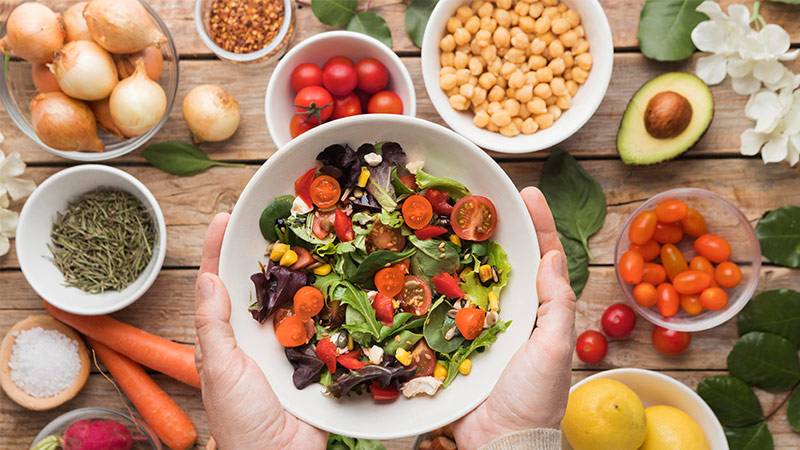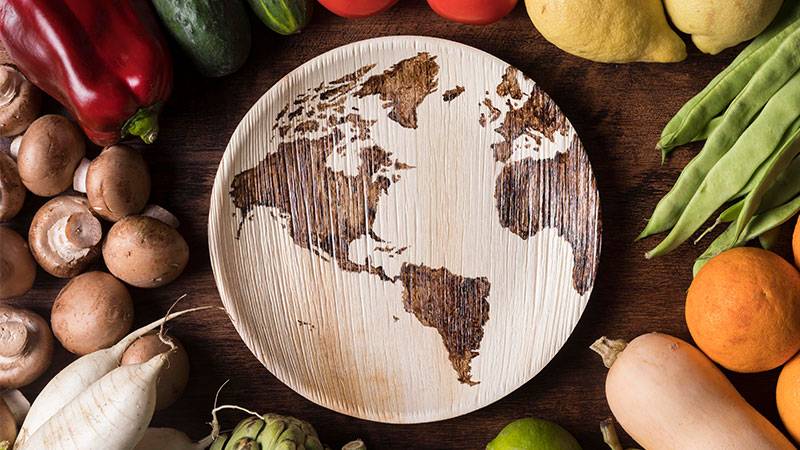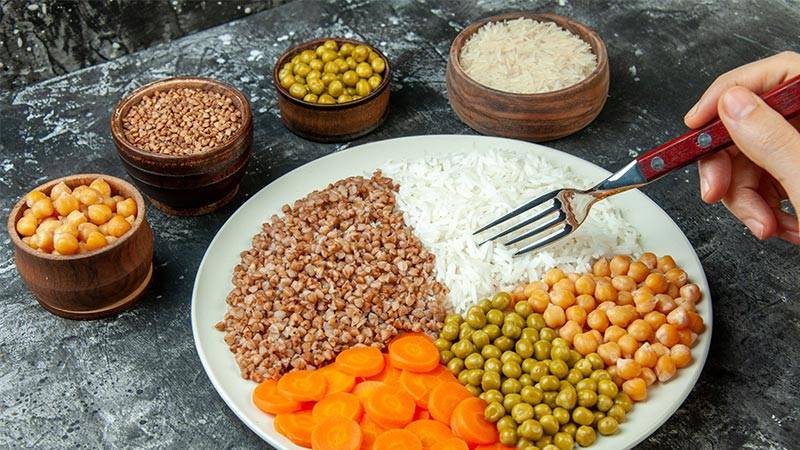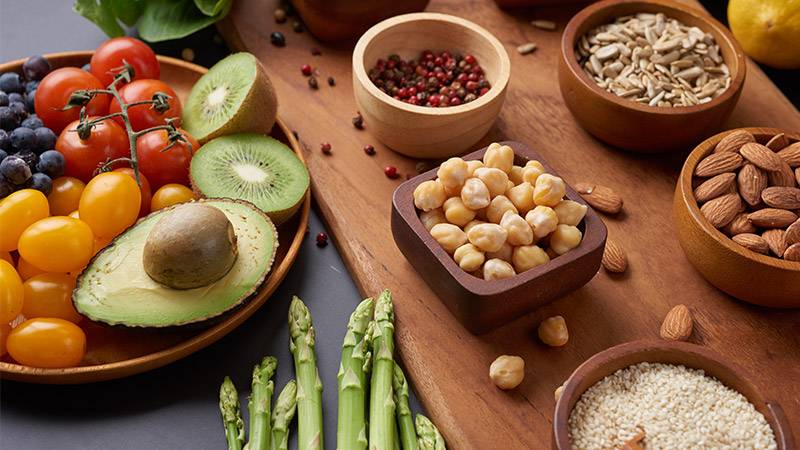If you’re like me, passionate about how our eating habits impact the environment, you’ll find the Blue Zones diet fascinating.
Originating from regions where people live exceptionally long and healthy lives, this diet is more than a mere meal plan; it’s a testament to sustainability and well-being.
Centered around plant-based, whole foods, the Blue Zones diet reflects the eating patterns of the world’s longest-living communities.
As we explore this diet together, you’ll see how it not only benefits our health but also plays a crucial role in nurturing our planet. Let’s embark on this journey of discovery and transformation together.
What is the Blue Zones Diet?
The Blue Zones diet is inspired by the eating habits of people living in the Blue Zones, five specific regions globally renowned for their high number of centenarians and remarkably low rates of chronic diseases. These regions include Okinawa (Japan), Sardinia (Italy), Nicoya (Costa Rica), Icaria (Greece), and Loma Linda (California, USA).
At its core, this diet is a reflection of a lifestyle centered around plant-based eating. It emphasizes whole foods like fruits, vegetables, grains, nuts, and legumes, while minimizing meat and processed foods. The diet is not just about longevity; it’s a holistic approach to a sustainable, healthy eating habit that aligns with environmental conservation and a low carbon footprint.
The Blue Zones diet is more than a dietary guideline; it’s a harmonious blend of traditional wisdom and modern nutritional science, offering a sustainable path to health and well-being.


Read More:
Environmental Benefits of a Blue Zones Diet
The environmental benefits of the Blue Zones diet are substantial, reflecting a deep commitment to sustainability and ecological balance. This diet, rooted in plant-based eating, significantly contributes to reducing our carbon footprint.
Studies show that shifting to a diet rich in plants can reduce an individual’s carbon footprint by up to 73%. By emphasizing whole foods like fruits, vegetables, and grains, the Blue Zones diet aligns with eco-friendly food choices, minimizing the reliance on animal agriculture, which is known for its high greenhouse gas emissions.
Moreover, this diet champions the consumption of locally sourced, organic eating options. This not only supports local economies but also cuts down on the environmental costs associated with long-distance food transportation. By encouraging such sustainable food choices, the Blue Zones diet plays a pivotal role in combating climate change.
Additionally, the diet’s focus on minimally processed foods means less energy and resources are expended in food production. Processed foods often require extensive packaging, which contributes to increased waste and pollution. In contrast, the Blue Zones diet’s preference for fresh, whole foods helps in reducing packaging waste and the environmental burden of waste management.
In essence, adopting the Blue Zones diet is not just a healthful choice for individuals; it’s a powerful step towards dietary sustainability. By embracing this way of eating, we contribute to a healthier planet, ensuring that our food choices support environmental health and longevity, much like they do for our personal well-being.

Health Benefits of a Blue Zones Diet
The health benefits of the Blue Zones diet are as impressive as they are diverse, primarily focusing on longevity and disease prevention. This diet, rich in plant-based, whole foods, is linked to a reduced risk of chronic diseases like heart disease, diabetes, and certain cancers.
A study found that individuals who follow a diet similar to those in the Blue Zones experience a 20% lower risk of early mortality.
Furthermore, the diet’s emphasis on fruits, vegetables, legumes, and whole grains ensures a high intake of essential nutrients, fiber, and antioxidants. These components are crucial for maintaining a healthy gut, reducing inflammation, and boosting the immune system. In turn, this enhances overall well-being and contributes to a longer, healthier life.
The Blue Zones diet also promotes moderate calorie intake and healthy fats, primarily from sources like olive oil and nuts. This approach not only aids in weight management but also supports brain health, potentially lowering the risk of cognitive decline and Alzheimer’s disease.
Incorporating the principles of the Blue Zones diet into your daily routine can lead to significant improvements in health, aligning with a lifestyle that not only fosters longevity but also enhances the quality of life.

Downsides of a Blue Zones Diet
While the Blue Zones diet offers numerous health and environmental benefits, it’s important to acknowledge its challenges. One significant concern is accessibility. The diet heavily relies on fresh, organic produce and whole foods, which can be more costly and less accessible in certain regions, potentially limiting its adoption across diverse socioeconomic backgrounds.
Cultural adaptability also poses a hurdle. The diet’s plant-centric focus may not align seamlessly with cultural dietary preferences that emphasize meat or specific cuisines. This might require individuals to make substantial adjustments to their traditional eating habits, which can be challenging.
Nutritionally, while the diet is generally balanced, some individuals might need to be mindful of potential deficiencies, particularly in vitamin B12, iron, and omega-3 fatty acids, which are more commonly found in animal products. Therefore, it’s essential for those following the Blue Zones diet to plan their meals thoughtfully and consider supplements if necessary, to maintain nutritional balance.
Foods to Eat on a Blue Zones Diet
Embracing the Blue Zones diet means filling your plate with a variety of nourishing, plant-based foods.
Here’s a list of staples to include:
- Legumes: Beans, lentils, and chickpeas are the cornerstone of this diet, offering protein, fiber, and essential nutrients.
- Whole Grains: Opt for whole grains like quinoa, barley, brown rice, and whole wheat, which provide sustained energy and vital nutrients.
- Leafy Greens and Vegetables: Kale, spinach, broccoli, and a rainbow of other vegetables should be a daily feature for their vitamins, minerals, and antioxidants.
- Fruits: Enjoy a variety of fruits such as berries, apples, oranges, and bananas for natural sweetness and a nutritional boost.
- Nuts and Seeds: Almonds, walnuts, flaxseeds, and chia seeds are great for healthy fats and protein.
- Healthy Fats: Incorporate olive oil, avocados, and other sources of monounsaturated fats for heart health.
- Herbs and Spices: Season your meals with a range of herbs and spices instead of salt, enhancing flavors and adding health benefits
- Whole Soy Foods: Tofu, tempeh, and edamame provide high-quality plant protein.
- Tubers: Sweet potatoes and other root vegetables are excellent for their fiber and nutrients.
- Water and Herbal Teas: Hydration is key; drink plenty of water and herbal teas, while minimizing sugary beverages.

Foods to Minimize on a Blue Zones Diet
While the Blue Zones diet is inclusive and flexible, there are certain foods it suggests consuming in moderation. Here’s a concise list of such items:
- Meat: Particularly red and processed meats. Opt for leaner, smaller portions, and view meat as a side rather than the main dish.
- Dairy Products: Limit high-fat dairy and choose plant-based alternatives like almond or soy milk where possible.
- Refined Sugars: Reduce intake of sugary snacks, desserts, and sweetened beverages.
- Processed Foods: Minimize consumption of foods with long ingredient lists, especially those with additives and preservatives.
- Refined Grains: Cut down on white bread, pasta, and other refined grain products, favoring whole grains instead.
- Excessive Salt: Limit high-sodium foods and use herbs and spices for flavoring.
- Alcohol: If consumed, do so in moderation. The diet typically recommends red wine, known for its health benefits when enjoyed responsibly.

Tips for Trying a Blue Zones Diet
Embarking on the Blue Zones diet can be a rewarding journey towards health and sustainability. Here are some practical tips to help you start, sustain, and thoroughly enjoy this diet:
Start Gradually
Don’t overhaul your diet overnight. Begin by incorporating more plant-based foods into your meals. Gradually increase the amount of fruits, vegetables, and whole grains while reducing meat and processed foods.
Plan Your Meals
Meal planning is key. Take time each week to plan your meals, ensuring they are balanced and aligned with the Blue Zones principles. This helps in making sustainable food choices and avoiding last-minute unhealthy options.
Cook at Home
Embrace home cooking. Preparing your own meals gives you control over ingredients, allowing you to focus on fresh, whole foods. Explore Blue Zones recipes for inspiration.
Mindful Eating
Eat slowly and savor your food. Mindful eating helps in better digestion and appreciating the flavors of wholesome foods.
Stay Hydrated
Prioritize hydration with water and herbal teas, reducing sugary and carbonated drinks.
Social Eating
Make mealtime a social affair. Eating with family or friends aligns with the Blue Zones lifestyle, promoting enjoyment and balanced eating habits.
Be Flexible
While the diet emphasizes plant-based foods, it’s okay to have occasional meat or dairy. The key is moderation and balance.
Local and Seasonal Foods
Whenever possible, choose local and seasonal produce. This supports sustainability and provides fresher, more nutrient-rich food options.
Incorporate Physical Activity
Complement your diet with regular physical activity, as movement is a key aspect of the Blue Zones lifestyle.
Join a Community
Finding a community of like-minded individuals can provide support, motivation, and shared learning experiences. Consider joining online forums or local groups focused on sustainable eating and the Blue Zones diet.


Read More:
Blue Zones Meal Plan for 1 Week
Here’s a diverse and appealing one-week meal plan that exemplifies the Blue Zones diet. This plan focuses on plant-based, whole foods, offering a variety of flavors and nutrients:
Day 1
- Breakfast: Oatmeal with berries, nuts, and a drizzle of honey.
- Lunch: Quinoa salad with mixed greens, chickpeas, cucumber, and avocado.
- Dinner: Lentil soup with whole grain bread and a side salad.
Day 2
- Breakfast: Whole grain toast with almond butter and sliced banana.
- Lunch: Brown rice bowl with stir-fried vegetables and tofu.
- Dinner: Baked sweet potato with steamed broccoli and a sprinkle of flaxseeds.
Day 3
- Breakfast: Green smoothie with spinach, apple, and chia seeds.
- Lunch: Whole wheat pita with hummus, tomatoes, and olives.
- Dinner: Vegetable curry with brown rice.
Day 4
- Breakfast: Yogurt with granola and fresh fruit.
- Lunch: Avocado and tomato sandwich on whole grain bread.
- Dinner: Grilled eggplant and zucchini with quinoa and a side of mixed greens.
Day 5
- Breakfast: Muesli with soy milk and mixed berries.
- Lunch: Lentil salad with peppers, onions, and a lemon vinaigrette.
- Dinner: Stuffed bell peppers with brown rice and black beans.
Day 6
- Breakfast: Scrambled tofu with spinach and mushrooms.
- Lunch: Kale and white bean soup with a side of whole grain bread.
- Dinner: Vegetable stir-fry with tempeh and brown rice.
Day 7
- Breakfast: Chia pudding topped with nuts and sliced fruit.
- Lunch: Roasted vegetable wrap with whole wheat tortilla.
- Dinner: Black bean burger with a side of sweet potato fries.
Conclusion
Embarking on the Blue Zones diet is more than a dietary change; it’s a step towards a healthier, more sustainable future. This journey blends the wisdom of the world’s longest-living cultures with a deep respect for our planet, offering a path to longevity, disease prevention, and environmental stewardship.
Whether you’re seeking to enhance your health or make a positive impact on the earth, this diet is a profound choice. I encourage you to embrace this fulfilling and rewarding lifestyle.
Start small, be consistent, and watch how these changes bring a new vibrance to your life and the world around you. Let’s begin this journey together towards a healthier, greener future!


